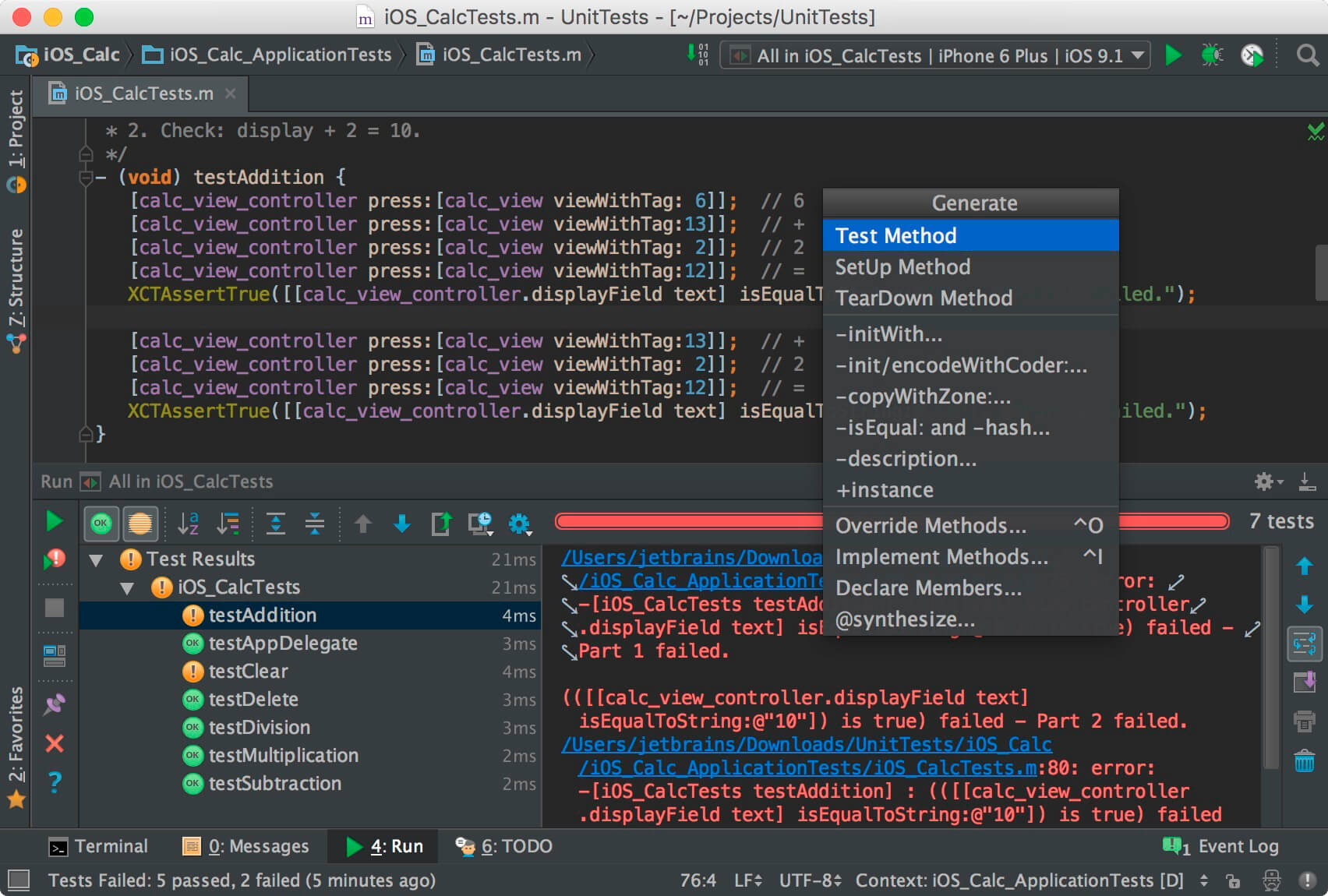

- #Intellij key to override methods how to
- #Intellij key to override methods code
- #Intellij key to override methods plus
(ns-do-applescript "tell application \"Emacs\" to activate") Raise/focus our window depends on the windowing system depending on where the open is invoked from e.g. Unfortunately, IntelliJ doesn't always supply the values The contents of the file should look like: You should make this file executable with chmod +x. I use ~/bin/openinemacs but you can put it anywhere. While this is possible in the external tools dialog it would be messy, so we’re going to write a quick wrapper to make this neater… Create a wrapper file To do this we need to invoke Emacs lisp from emacsclient. Automatically revert the file if we make any changes in IntelliJ (i.e.Jump to the same line and column that we were on in the file.In particular, as Emacs is immensely programmable via its built-in Lisp engine we can override a few settings in the loaded buffer to better work with the already open file in IntelliJ. This is probably enough for most people, however there are a few more features we can add for the programmer who likes to tweak things (and if you’re using Emacs that’s almost certainly you). Once you’re done just save the Emacs buffer and switch to IntelliJ and it will pick up the changes. Now you can just invoke your keyboard shortcut in any file you’re working on and it will immediately load in Emacs. This will pull up a dialog allowing you to add a new keyboard-shortcut I use Ctrl-Shift-O under Linux and Cmd-Shift-O under OS X, but whatever works for you. To do this go to Preferences->Keymap->External Tools and double-click on your new tool. However we can do better than that and add a keyboard shortcut. Your new tool should now be available in the Tools main menu and under the context (right-click) menu in the tab for any open files. Tweak the other parameters as you see fit personally I disable the console as it doesn’t add anything.Īdd a keyboard binding to invoke this tool.For parameters add -n to have the client not wait, and the $FilePath$ IntelliJ variable to give it the file to load.Users/ssmith/Applications/Emacs.app/Contents/MacOS/bin/emacsclient. For Linux this is usually /usr/bin/emacsclient however if you’re on OS X and using the Cocoa packages you’ll need to add the path to the binary from that e.g. For Program enter the path to your emacsclient binary.
#Intellij key to override methods plus
From there click the plus button to add a new tool. To use this to send files to Emacs go to Preferences->External Tools. IntelliJ has a feature called external tools that allows it to invoke external commands with some pre-defined variables, such as the current file path.
#Intellij key to override methods how to
Teach IntelliJ how to send files to Emacs

This is just a case of invoking M-x server-start in an existing Emacs window. So start up an Emacs session if necessary and then tell it to listen for instructions from emacsclient. Rather than constantly starting up Emacs every time we want to use it, we’re going to keep an Emacs session running in the background and just tell it to load whatever file we want most Emacs users tend to have a session open for months anyway. This is how you do it… Get Emacs to listen for commands What I want to do is do my coding in IntelliJ on a day-to-day basis, but immediately load a file into Emacs for any tricky text processing I want to do. Right, enough rationalisation, let’s get on with it.
#Intellij key to override methods code
In particular, Emacs’ keyboard-macros have helped me turn some annoying data and code transformation problems into a few key-presses in the past, as this screencast from Avdi Grimm shows: And sometimes you need to get down and dirty and hack on some text, be it mangling CSV or conforming to some baroque copyright header formatting requirements. Sure, IntelliJ has keybindings to match Emacs and Vim, but those editors have other features that enable complex text processing patterns. In particular, its on-the-fly tracking of the project syntax tree enables complex refactoring and clean-ups, either automated or by the more brute method of just changing something and seeing what turns red in the editor.īut like western musical notation enables complex harmonic structures at the cost of rhythmic structure, IntelliJ’s structured refactoring come at the cost of a really powerful text editor. This is because while Emacs is a great text editor, IntelliJ takes a holistic and semantic view of your project, something that is necessary with Java’s verbosity and file-based classes.

However when I moved into the order-systems team I adopted IntelliJ IDEA, which is our weapon of choice for Java development at Atlassian. As I’ve mentioned before, I’m gradually working towards my grey-beard badge so for most of my programming I tend to use Emacs.


 0 kommentar(er)
0 kommentar(er)
